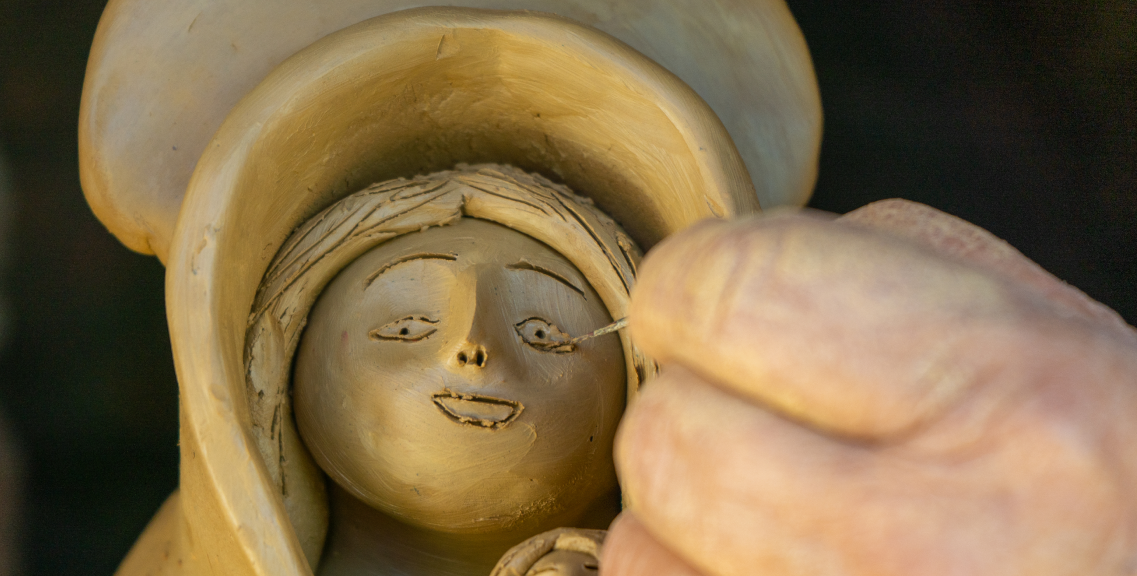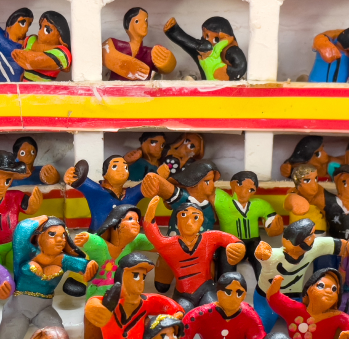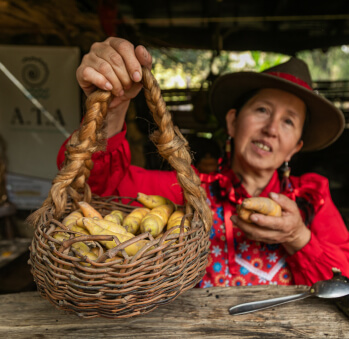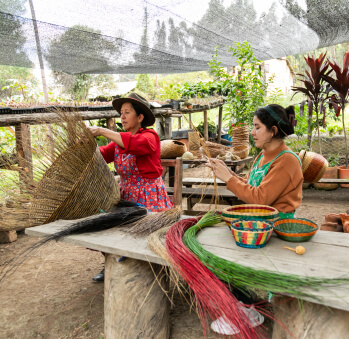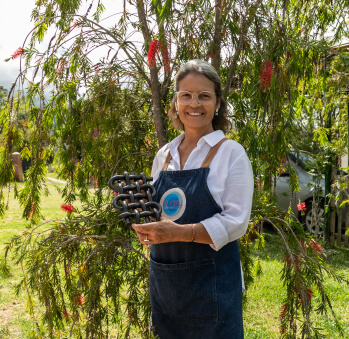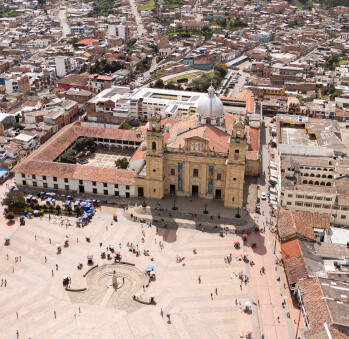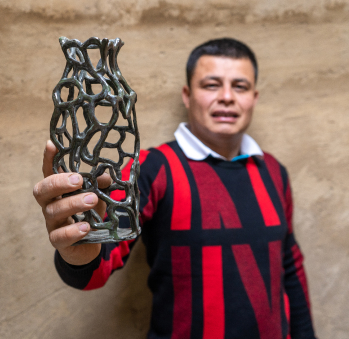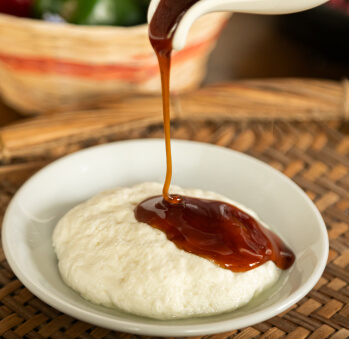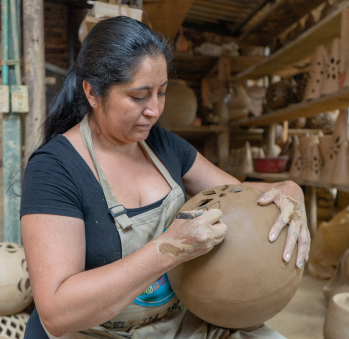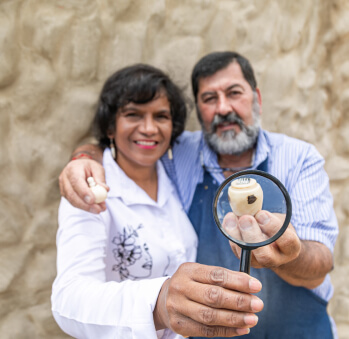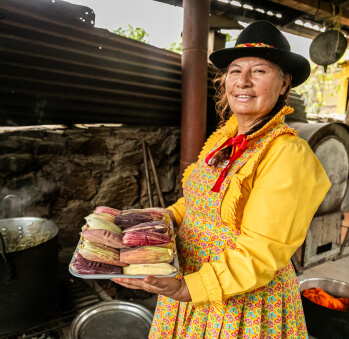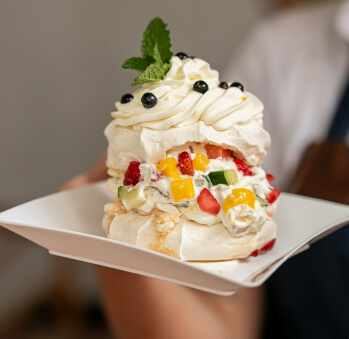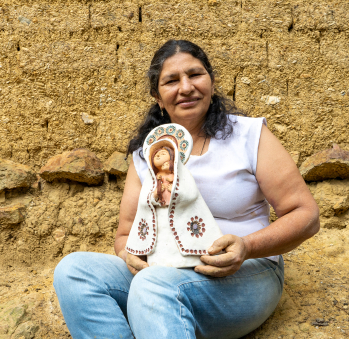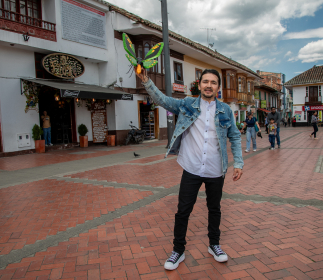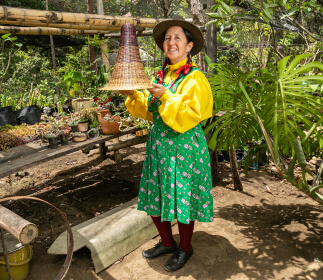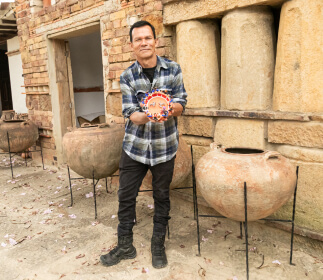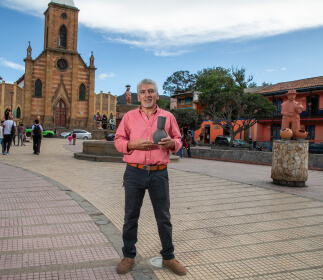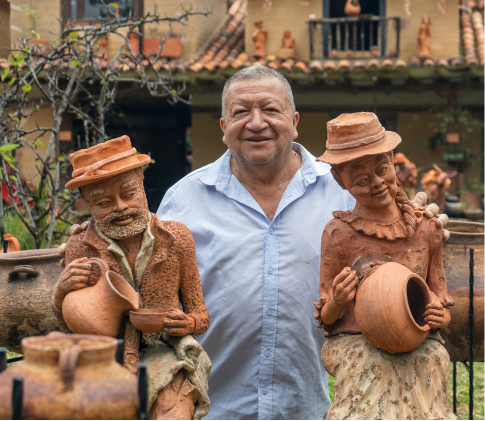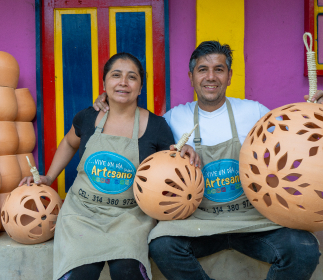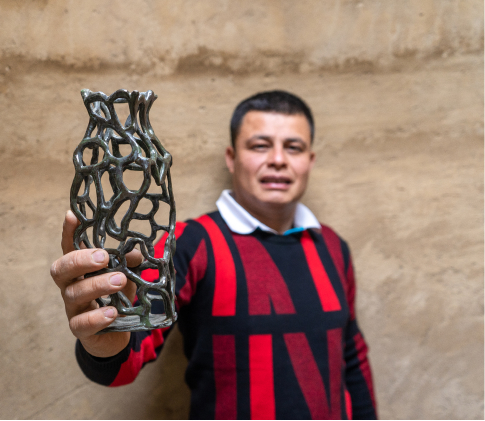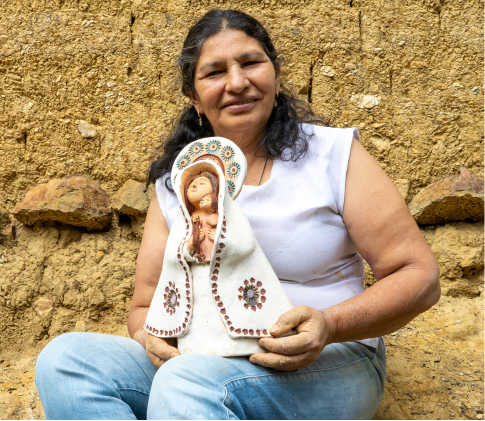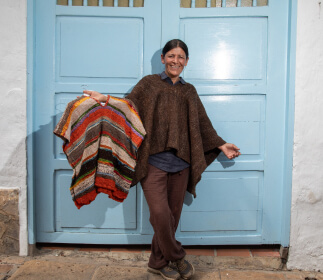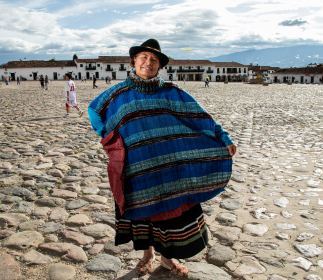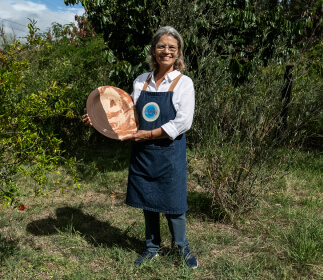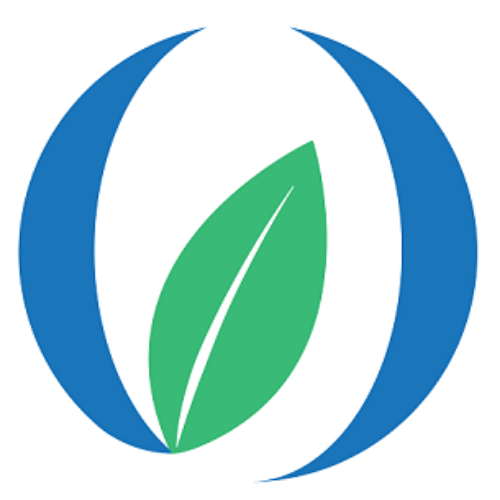Ráquira - Chiquinquirá Route
Back to main routeWe invite you to immerse yourself in the pottery world of Ráquira, just half an hour from Villa de Leyva, where we recommend staying to enjoy its many hotel and dining options. Besides all the ecotourism and cultural activities, you’ll meet some of the region’s top wool weavers. You can even take weaving and embroidery classes and watch them shear a sheep right in front of you. In Ráquira, you’ll discover the secrets of the clay that has made this town famous for its pottery. Watch as artisans shape and fire the local clay into beautiful pieces, and if you’re feeling adventurous, try making something yourself. It’s a fun and unique way to experience this picturesque town that is always a pleasure to visit. Nearby Tinjacá is home to a master carver working in tagua or ivory palm. Finish your journey in Chiquinquirá, where you’ll find not only the imposing Chiquinquirá Cathedral but also a local artisan who carves the region’s distinctive birds.
Embark on a journey full of history
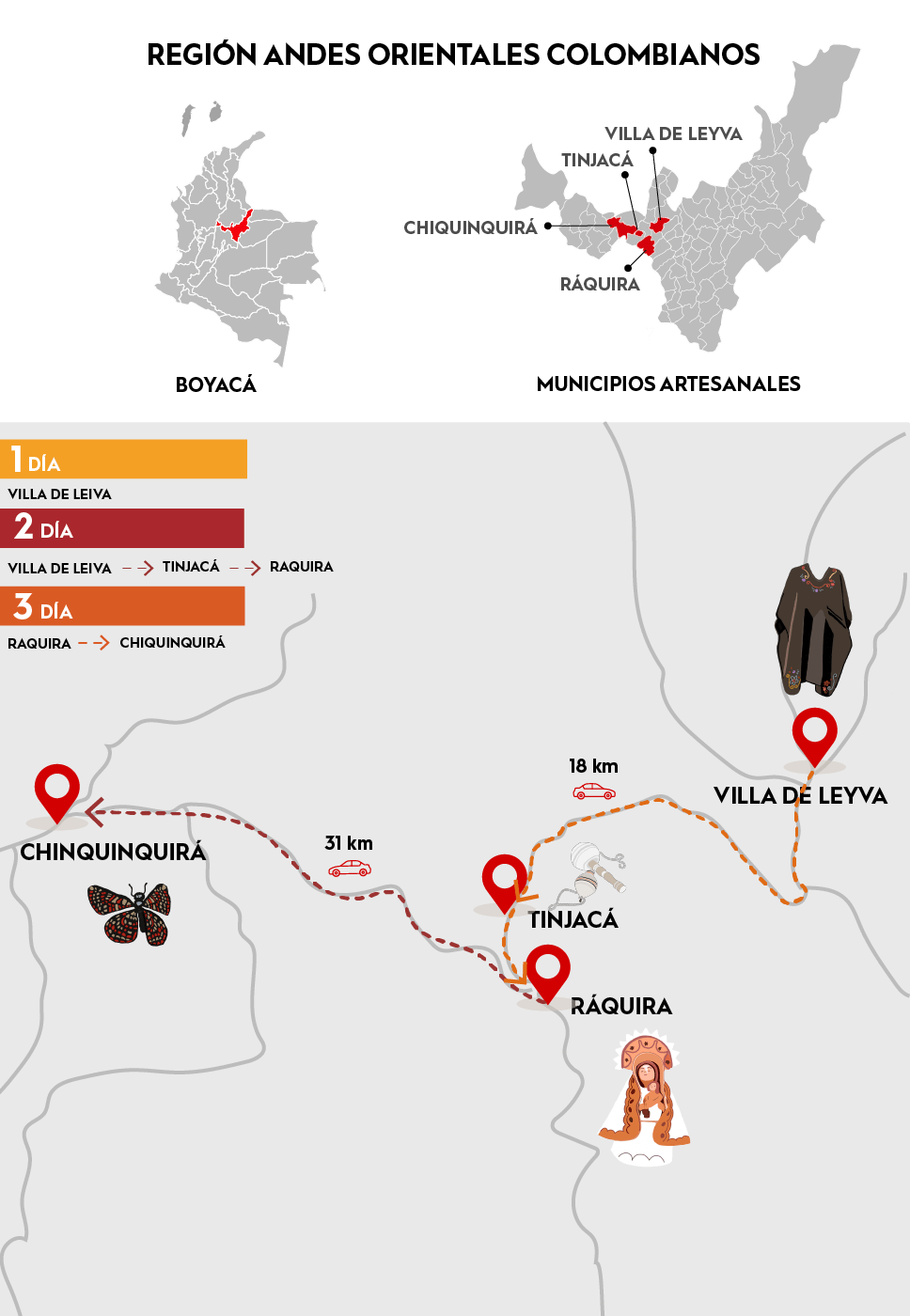
Artisans along the way
Artisans along the way
We recommended this tour
Schedule the visit in advance with the artisans.
Carry cash
3 days
Car or Bus
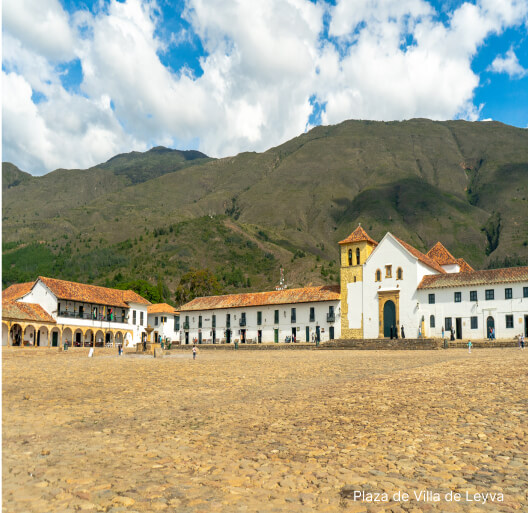
Villa de Leyva
Welcome to one of the most visited towns in Colombia, 167 kilometers from Bogotá. The town’s emblematic main square, one of the largest in the country, and its colonial architecture are its trademarks. Before planning your trip, make sure to check the calendar of fairs, festivals, and events, as Villa de Leyva hosts them all. Depending on your timing, you could catch the kite festival, fireworks displays, the sacred music festival, jazz festival, or green film festival. Riding bikes or walking along the town’s hills and cobblestone streets is a must, as the climate is inviting. You can also visit the ostrich and dinosaur parks, El Infiernito with its stone totems, the Fossil Museum, the farmer’s market, the vineyards, and its many restaurants. With so many options, Villa de Leyva makes a great base for your adventure, and we suggest staying here for one or two nights. Add a visit to the homes and workshops of the artisans we recommend, and you’ll appreciate the beauty and craftsmanship of the ruanas and blankets you love to wear.
Sutamarchán
The scent will draw you in. Just 20 minutes from Villa de Leyva (13 km), on the way to Ráquira, you’ll arrive at this town, known as the land of longaniza, a delicious pork sausage. Be sure to stop and try it, either on its own or with a generous plate of other meats, potatoes, and blood sausage, all washed down with cold beer. You’ll be satisfied and happy, which is the perfect state of mind to continue your journey.
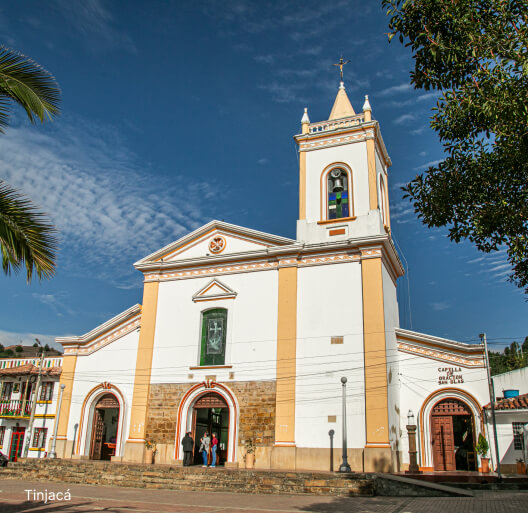
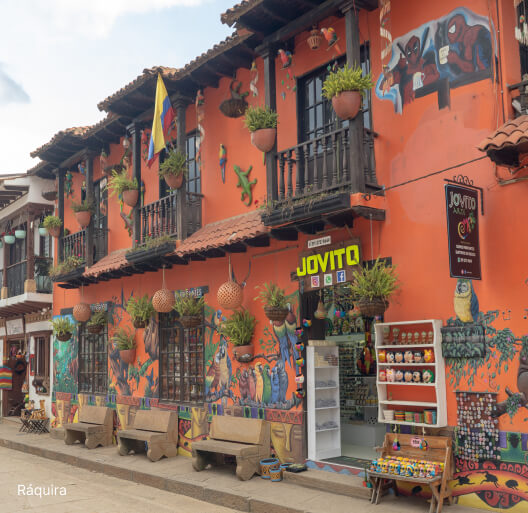
Ráquira - Tinjacá - Chiquinquirá
Just 12 km from your tasty stop, you’ll know you’ve arrived when you see the town painted in shades of orange, with pottery and ceramic pieces displayed everywhere. In two days, one in the town center and another visiting the artisans in their villages, you’ll have time to explore the square and the wide range of pottery on offer. Start by visiting the workshops of Leidy Villamil, Blanca Nubia Sierra, Laureano Melo, and Saúl Valero to learn about the art of clay. Then head to the nearby villages, where you can discover contemporary ceramics by Iván Botia in Agua Buena, and meet Reyes Suárez, master in the making of clay animal figures, and the legendary Rosa María Jérez, creator of the famous Otilia clay virgins in Resguardos de Occidente. You can also take several ecotourism trips around this beautiful desert region, such as to the Rabanal páramo or the Chaute Natural Reserve, about an hour and a half from Ráquira. And if you’re interested in stargazing, don’t miss the Patio de Brujas astronomical observatory, made with clay totems that track the moon’s movements and plan the solar calendar. Be sure not to miss the Giant Muisca Pot, the giant chess set at Beraca farm, and the Clay Paradise park, where clay is the star. A Boyacá stew served in clay pots is a must! Wrap up your journey with a visit to the tagua workshop of César Bonilla in Tinjacá, and the pottery workshop of Francisco Rincón in Chiquinquirá.
Route acknowledgement
Recommended sites
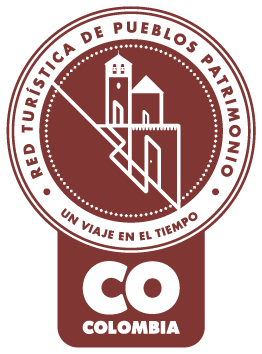
Pueblo Patrimonio
La Red Turística de Pueblos Patrimonio de Colombia es un programa especial del Ministerio de Comercio, Industria y Turismo, ejecutado por FONTUR, que trabaja con 17 municipios de Colombia que poseen declaratoria de Bien de Interés Cultural (BIC) a nivel nacional para su valoración y proyección mediante el turismo, generando así más oportunidades de desarrollo y sostenibilidad en las comunidades.

La Medalla a la Maestría Artesanal es un galardón que Artesanías de Colombia entrega anualmente, con el cual se hace un reconocimiento a aquellos artesanos, empresas y comunidades artesanales que, contando con una trayectoria destacada, sobresalen a nivel nacional por su excelencia en el oficio así como por preservar el quehacer artesanal.

Denominación de Origen
Es un signo distintivo que identifica productos reconocidos o famosos por tener una calidad o características específicas derivadas esencialmente del lugar de origen y la forma tradicional de extracción, elaboración y producción por parte de sus habitantes. La protección conferida sobre una Denominación de Origen implica que ninguna persona puede identificar con la denominación protegida productos iguales o similares a los amparados, cuando no provengan del verdadero lugar y no cumplan con las características o calidades que le han dado la reputación al producto reconocido. Las Denominaciones de Origen para productos artesanales colombianos que han sido protegidas por la Superintendencia de Industria y Comercio en nuestro país son actualmente 12.
No puede copiar contenido de esta página








































